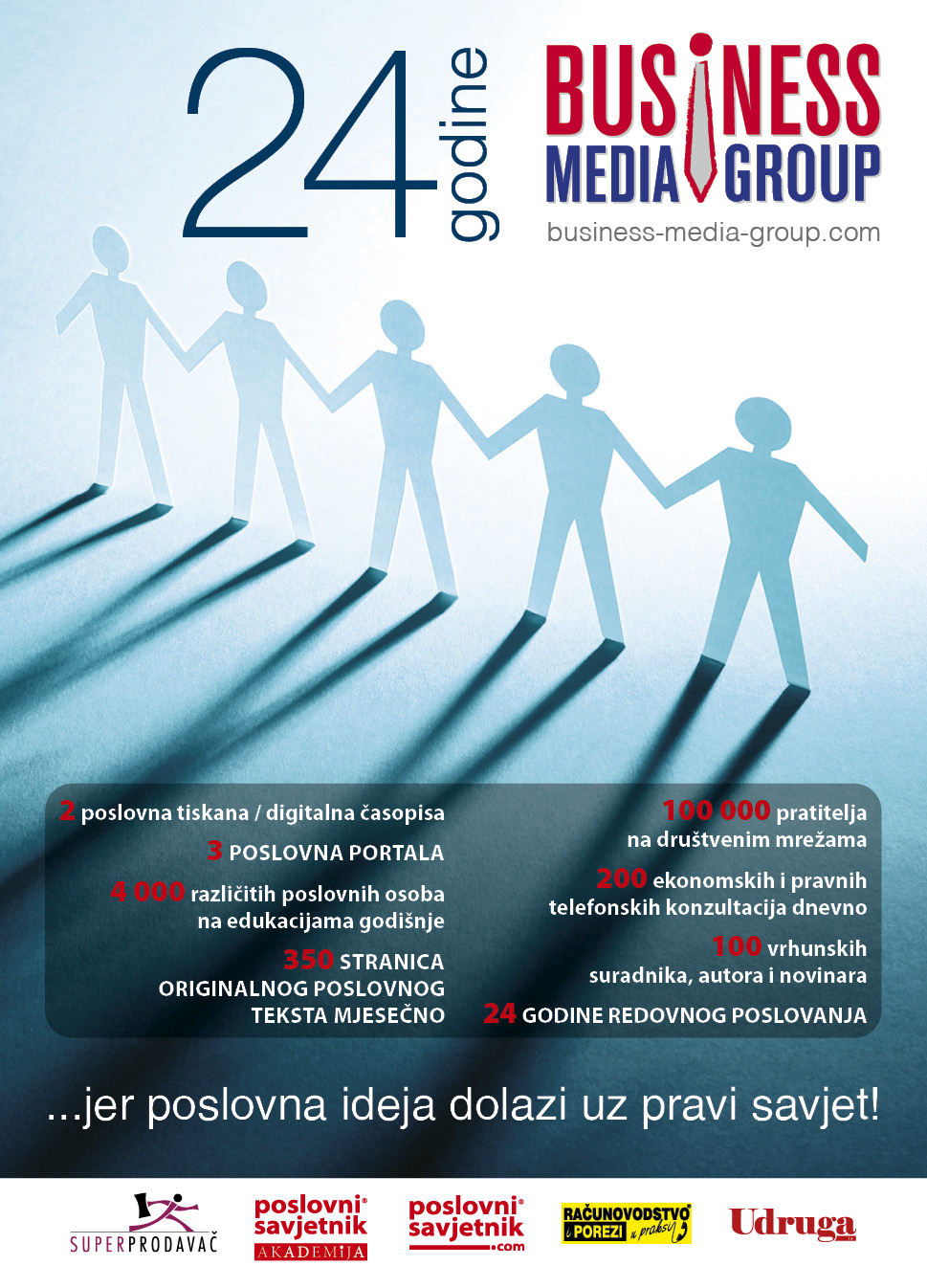John Lodder: People don’t resist change, managers create ‘resistance to change’

My May column is about the disruptions in the markets and shortening the lifecycles of organizations; I mainly focus on Change / Transformation processes: why do 75% of Change Projects fail resp. not reach their goal(s) and here I see a shocking conclusion from recent research. Then I dive deeper into 5 myths about ‘Resistance to Change’ to end with 6 key suggestions how you could lead change projects (more) successfully.
‘Change is the only constant’ (Heraclitus, 540-480 BC)
‘Change is the only constant’ and yes, since the 1960’s ‘Change is going faster and faster.’
Figure 1 shows that the average lifecycle of organizations, until they have to reinvent or transform themselves, went down from every 37,5 years in the 1960’s to every 3 years in the 2020’s and Generative AI will (probably) increase this tempo.
Think about the generation of Baby Boomers who started to work in a company and usually stayed in that company till their retirement date; they experienced maybe one or two minor changes during their time.
Most of the current generations, X from 1960, Y from 1980 and generation Z from 1995, work(ed) in four to seven different jobs and companies and experienced several larger and more complicated changes as the Baby Boomers did, and, on top the got a pandemic and hybrid working to cope with.
The feeling today is that after one transformation is finished the next ‘Change Project’ already arrived.
.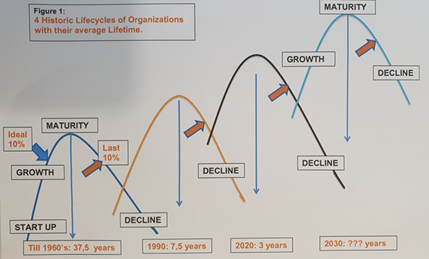
Figure 1: Company Lifecycles are getting shorter.
Professor Isolde Kolkhuis-Tanke from the Business School Netherlands (BSN) says ˝managers were problem solvers˝: the employee has a problem, (s)he asks the manager and the manager has an, often, too quick solution. This is often the manager’s favorite solution, because managers, under time pressure, have a too much ‘quick mindset’. The manager forgets the analyses, doesn’t test his solution. Often it works well, but not always.
Problems today are more complex than before, that’s today’s reality. Managers cannot have all the answers anymore.
Dare to admit that you don’t know and debunk the myth that a manager has to have all the answers!
Stimulate your employees to think for themselves and ask them to propose their solution to you, then openly exchange together. If this manager does this in an open way the result is that you free yourself and, at the same time, you help your employee to develop him/herself.
Kolkhuis-Tanke ‘Managers should become flexible leaders and learners’ and she offers 6 suggestions:
- Stay curious and inquiring, always have an open mind.
- Go beyond your ‘taken for granted’ assumptions.
- Involve different perspectives (from a diversity of people, theory and research). Be open with your people; teach them to think before they ask.
- Ask critical questions, to help them find the deeper levels and patterns of a problem themselves.
- Experiment with something new and….’learn to fail’; ‘Just Do it’: We learned for too long to avoid failures. Remember that many great inventions were a consequence of failures.
- Create a ‘Growth Mindset instead of a ‘Fixed Mindset’. (Children in many countries are educated based on this theory, invented by professor Carol Dweck; unfortunately not in Croatia so far)
I offer a 7th suggestion based on recent neuroscience research by Waltman and Sitskoorn, from their book ‘Brain at work’. (This book is at the moment only available in Dutch language). - Teach your people to experiment, let them improve themselves with finding their own answers.
Give them space and trust, for now and for the future.
So you support them in developing themselves and they can create added value to your company.
Employees Are Losing Patience with Change Initiatives
Cian Morain and Peter Aykens (Gartner Research) wrote an article in Harvard Business Review (HBR, May 2023) with a very shocking conclusion as shown in Figure 2:
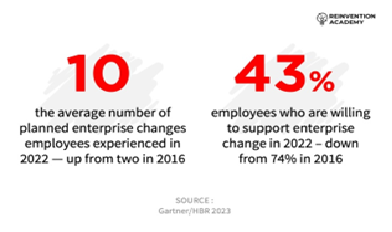
Figure 2: The rising number of Change Projects.
˝In 2022, the average employee experienced 10 planned enterprise changes, such as a restructure to achieve efficiencies, a culture transformation to unlock new ways of working or the replacement of a legacy tech system, up from two in 2016.˝
Business transformations will remain at the forefront in 2023, as organizations continue to refine hybrid ways of working and to respond to the urgent need to digitalize, while also contending with inflation, a continuing talent shortage, and supply-chain constraints. These circumstances, which require higher levels of productivity and performance, also mean a lot of change according to Gartner research.
While more change is coming, the workforce has hit a wall: The survey revealed that employees’ willingness to support enterprise change collapsed to just 43% in 2022, compared to 74% in 2016.
This gap between the required change effort and employee change willingness we call the “transformation deficit.” Unless managers steer swiftly and expertly, the transformation deficit will hinder organizations’ ambitions and undermine the employee experience, fueling decreased engagement and increased burn-out or quite quitting.
The irony is that many of the goals of transformations, e.g. redesigning teams and structures, automating drudge activities, reengineering corporate culture, have the goals to ease burnout and fatigue and increase efficiency. Unfortunately, many managers are approaching change management by applying short-term fixes, which is unsustainable. Obviously there is a need for a more open communication and listening to employees feelings.
What are factors that might cause the so called ‘Resistance to Change’?
Most CEO’s and managers start a change project top-down. This approach causes several issues in the organization even before the project really started. Top-Down means that managers don’t want to see or give enough attention to potential:
- Psychological barriers (from managers’ wishes for status quo) like: fear of the unknown, low valuation tolerance, disinterest, lack of trust in others, security requirement,
- Social and group barriers like: rejecting outsiders, group solidarity; one has mutual obligations, the change does not correspond with the existing norms/values of the team or department.
- Organizational barriers like: lack of sufficient motivation to change, work ethic is not focused on change, different cultural backgrounds of the organization members, approach of the consultant, type of change does not match the existing culture, the change threatens the existing influence/power of certain people resp. organization members, the organization offers insufficient favorable (personnel and material) conditions to change, the personal assessment of the organization members that the change will be successful is very low (often related to personal history of and/or experience with change), insufficient professionalism present in the organization to make the change effective to guide.
Understanding Resistance to Change
Thomas Head (in Lodder, 2003) argues that the key to understanding resistance to change is typically caused by the change process itself: the how, rather than the change intervention itself: the what.
He gives three explanations:
- Logic: which individual would reject job enrichment or improvements in the quality of his/her work?
It makes no sense to fight an intervention that would increase one's own self-esteem and self-image. - Research: interventions only work if the project is implemented correctly. This often does not happen due to, among other things, a lack of consensus in the operation, lack of a clear senior manager responsible, unrealistic expectations and way too late involvement of employees.
- Managing resistance to change: involvement of employees at an early (diagnosis and design) stage is mostly missing, a lack of empathy from management, total and sincere information and continuous communication is often missing and there is a lack of rewarding the efforts of the employees.
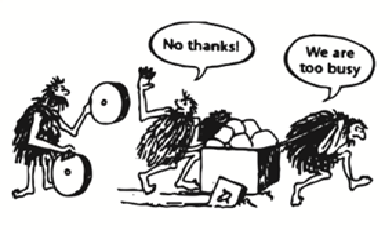
Figure 3: Our boss gave us so much work; we’re too busy to think.
According to Head, there are five myths about resistance to change:
Myth 1: Resistance is always "bad"
Head says that is nonsense, resistance has always been there, it is 'normal'. You have to take it as a signal, as an expression of dissatisfaction and you need to do something with it; it can protect an organization from something very stupid. You have to manage resistance adequately.
Appreciative Inquiry (AI) is the Methodology for Positive Organizational Change, an intervention that creates a positive change process without resistance, because it assumes the good, the positive and the desirable instead of the bad, the wrong and the ineffective. (I did a large AI project in Metro C&C Croatia and saw the positive results)
Myth 2: There will always be resistance to change
Presumably that is true and there will always be suspicion. The question with this myth, however, is not whether resistance 'will' arise, but with the question 'how significant' is that resistance? As soon as it is assumed that resistance is significant, which usually happens, management will integrate this assumption into the change process and the communication about it, and a self-fulfilling prophecy will arise.
Appreciative Inquiry offers an excellent method to prevent this. AI assumes that resistance does not occur because everyone is involved and asked about positive their experiences and how to apply them in this process to the future; who has problems with that?
Myth 3: Resistance is all or nothing
Change is all or nothing. Change is winning or losing. Change is war. This is the general expectation and picture as managers view resistance. The employees are either for or against us. However, resistance is not so black and white; there are many shades of gray to be discovered.
Most of the staff is reasonable, intelligent and somewhat rational, but also emotional about their work (place). Faced with an understandable change and an intervention that is clear, people will accept that process.
Management often forgets that, in their perspective, ‘low classified’ employees take important financial decisions about change themselves, for their family, like buying a house or invest in children; or having important decision maker functions in their sport club etc.
Faced with change, it is logical that employees have questions. Not intended as sneaky resistance, but simply as gathering information to form a personal opinion.
The key question is how do managers deal with such questions? They may feel challenged or threatened, surprised or bewildered, and respond inadequately because they assume they were misunderstood in the first place. Of course, it often happens that political answers follow.
Appreciative Inquiry takes a positive approach to change by publicly collecting data and ideas, sharing them and bringing all the possibilities to the table instead of only all the problems.
Myth 4: Resistance to change is a group idea:
Head found that when managers think about change, they often move from first-person singular to third-person plural.
Managers start their speech with “I think this project is a good idea” but end with “they (the employees) will fight it”.
This perspective can lead managers to a whole bunch of wrong decisions because they operate from a wrong assumption. Resistance to change, just like motivation and satisfaction, takes place in the head of the employee and therefore managing it must also take place there.
Groups cannot resist, but each individual group member can because of his/her individual interests.
If each individual group member has his/her reasons for resistance, group level solutions will never be adequate. Resistance manifests itself in and out of the individual; therefore resistance must be openly addressed.
This requires a technique in which each individual can contribute his/her concerns and ideas.
Appreciative Inquiry (AI) is an excellent approach to achieve this. AI encourages everyone to bring in their peak experiences and the reasons for it. This means that every employee is heard and, more importantly, is understood and thus contributes to the end result. In this way, managing resistance becomes a tool instead of an obstacle.
Myth 5: You have to 'buy' your employees' commitment:
As soon as an employee hears that a change is about to happen in the organization, three questions come to his/her mind in the following order:
- Why?
- What does that mean for me?
- What's in it for me?
Managers, who have experienced this all themselves several times, know perfectly well, if only on a subconscious level, that every employee asks themselves these same questions.
This debunks the myth that if you want employees to commit to the change, you have to 'buy' them.
But this is clearly theory X (Mc. Gregor) of which Gary Yukl (1983) already proved that commitment cannot be bought. The maximum effect of 'buying' is that employees agree, but without any motivation.
Another (dangerous) result of 'buying' commitment can be that resistance increases even further because it is interpreted as a bribe.
Of course you can also ask yourself why the change is so desirable if you have to bribe your employees for it.
Change is necessary, there is no discussion about that, and everyone knows and understands that.
Management forgets far too often that the best results are achieved through intrinsic motivation (pride, growth, opportunities, achievements, happiness, fun at work, etc.) and not through extrinsic motivators (salary, bonus, etc.).
An Appreciative Inquiry process prevents both management shortcomings. Employees immediately answer their own questions. By emphasizing the desires to (co)create peak experiences; 'the why' is very clear! If this process is managed properly, this will immediately lead to a significant increase in employee satisfaction, morale, acceptance and inspiration and cooperation. Dare to ‘jump’ over your own shadow!
Why change management is broken
More than 75% of organizations manage change top down.
This typically means that CEO’s and senior managers exclusively make strategic decisions, create implementation plans, and then roll out organization wide communication programs to gain workforce buy-in.
This straightforward strategy used to enable rapid change because organizations were largely vertical; leaders held all the key information and the workforce were structured in clear, hierarchical reporting lines.
In that environment, top-down change strategies mirrored organizations’ structure and workflow.
Compare that to how things look today: Organizations have more complex, matrixed reporting lines or self-managed circles by employees and interdependencies.
On top: employees have much more (access to) information about their jobs, their markets and customers, the business environment, and each other. Very often even more then their Boards and CEO’s do have.
In conclusion: 75% of Change Projects fail because Top-Down Change Strategies are fundamentally disconnected from today’s workflow, and they’re slowing organizations down. Sixty-six percent of CHROs are dissatisfied with the speed of change implementation. Organizations need a better path forward in this evolving change environment.
The Big Pitfall: Moving Too Fast
The most common mistake when it comes to change management today is trying to build momentum for transformation by hitting the accelerator.
A 2022 Gartner survey found that 75% of organizations are adopting a top-down approach to change, where leaders set the change strategy, create detailed implementation roadmaps, and deploy a high volume of change communications. Their goal is for workers to buy into the new path and for managers to lead the change as champions and role models for their teams.
Unfortunately, navigating the pandemic asked a lot of employees and while they delivered, it came at a cost. Relentless sprinting means many employees are running on fumes. Gartner research reveals that:
- Fifty-five percent of employees took a significant hit to their own health, their team relationships, and their work environment to sustain high performance through the disruption.
- 11% of employees are at home with a burn-out.
- Only 36% of employees reported high trust in their organizations, with onsite workers reporting the least trust.
- 50% of employees reported struggling to find the information or people they needed to do their job on an ever-increasing volume of tasks.
How could a systemic approach help you to lead change projects successfully?
In HBR of May 23, Andrew White, Michael Wheelock, Adam Canwell and Michael Smets offered 6 Key Levers of a successful Organizational Transformation
They say that Organizational transformations are extremely difficult on a personal level for everyone involved.
A team of researchers found that in successful transformations, leaders not only made sure their teams had the processes, resources, and technology they needed, they also built in the right emotional conditions.
These leaders offered a compelling rationale driving the transformation and they ensured employees had the emotional support they needed to execute. This meant that when the process inevitably got tough, employees felt appropriately challenged and ultimately energized by the stress.
By contrast, leaders of the unsuccessful transformations didn’t make the same emotional investment.
When their teams hit the inevitable challenges, negative emotions spiked, and the team entered a downward spiral. Leaders lost faith and looked to distance themselves from the project, which led employees to do the same.
The researchers identified six behaviors that consistently improved the odds of transformation success.
At the same time, leaders must recognize that every transformation is fraught with risk. In 1995, John Kotter found that 70% of organizational transformations fail, and nearly three decades later, not much has changed.
Our own research showed similar results: 67% of leaders told us they had experienced at least one underperforming transformation in the last five years.
Considering that organizations will spend billions on transformation initiatives over the next year, a 70% failure rate equates to a significant erosion of value.
So, what can leaders do to tilt the odds of success in their favor?
To find out, we interviewed 30 leaders of transformations and surveyed more than 2,000 senior leaders and employees in 23 countries and 16 sectors. Half of our respondents had been involved in a successful transformation, while the other half had experienced an unsuccessful transformation.
So what tactics did the leaders of successful transformations use to manage the emotional journey?
To find out, we built a model to predict the likelihood that an organization will achieve its transformation KPIs based on the extent to which it exhibited 50 behaviors across 11 areas of the transformation.
This model revealed that behaviors in six of these areas consistently improved the odds of transformation success. Organizations that are above average in these areas have a 73% chance of meeting or exceeding their transformation KPIs, compared to only a 28% chance for organizations that are below average.
Our research suggests that any organization that can effectively implement these six levers will maximize their chances of success.
Our research also found that a key difference in successful transformations was that leaders embraced their employees’ emotional journey.
Fifty-two percent of respondents involved in successful transformations said their organization provided the emotional support they needed during the transformation process “to a significant extent” (as opposed to 27% of respondents who were involved in unsuccessful transformations).
Transformations are extremely difficult on a personal level for everyone involved. In the successes we studied, leaders not only made sure their teams had the processes, resources, and technology they needed, they also built the right emotional conditions.
These leaders offered a compelling rationale driving the transformation, and they ensured employees had the emotional support they needed to execute. This meant that when the going inevitably got tough, employees felt appropriately challenged and ultimately energized by the stress.
By contrast, leaders of the unsuccessful transformations didn’t make the same emotional investment.
When their teams hit the inevitable challenges, negative emotions spiked, and the team entered a downward spiral.
Leaders lost faith and looked to distance themselves from the project, which led employees to do the same.
The Six Key Levers of Transformations
So, these tactics were used by the leaders of successful transformations to manage the emotional journey that maximizes the chances of success:
1. Leadership’s own willingness to change
Many people believe that a leader’s job is to look outward and give others guidance, but our research suggests that to help their workforce navigate a transformation, leaders need to look inward first and examine their own relationship with change.
“If you are not ready to change yourself, forget about changing your team and your organization,” as Dr. Patrick Liew, executive chairman at GEX Ventures, told us.
In the interviews leaders spoke of working on their own development, including engaging more with their emotions and becoming accustomed to the discomfort that accompanies personal growth.
Leaders needed to “look into a mirror,” as one told us, and realize that they were part of the problem before the shift to a positive trajectory could take place. They needed to remove their own fear before they could help their employees get through this change.
“As someone who was tasked to lead this transformation, if I’m being honest with you, it was pretty unsettling at the start, because I think by nature most of us like to know the path we’re going on,” as one COO from the automotive industry told us. And a senior vice president in the global business services industry described needing to become more vulnerable and honest on their path to self-discovery: “I think I became even more aware of myself, who I am.”
2. A shared vision of success
Creating a unified vision of future success is another all-important foundation point of a transformation.
In our research, 50% of respondents involved in successful transformations said the vision energized and inspired them to go the extra mile to a significant extent.
Employees must understand the urgent need to disrupt the status quo. A compelling “why” can help them navigate the inevitable challenges that will arise during a transformation program.
Many of the workers who took our survey said that they “wanted” and “needed” the vision to be communicated clearly. When leaders share a clear vision, the workforce is more likely to get on board. But if people don’t understand the vision or need for transformation, success is hard to achieve.
“It’s not about telling people ‘This is what’s going to happen,’” as a managing director in the medical device industry told us. “It’s about me creating this shared sense of ownership and then coaching my team on what they need to achieve. We very consciously want our teams to really buy into this is how we, as a collective, want to work.”
3. A culture of trust and psychological safety
Trust and care from leaders can make a difficult transformation more emotionally manageable.
At the most basic human level, we all know what it feels like to be seen, listened to, and heard by another person.
It can validate our effort, motivate us to work harder, and help assuage emotions like doubt, fear, anger, and sadness. Workers in our study shared that they wanted leaders who were patient and who also had, in the words of one employee, a “calm and teachable spirit.”
In a workplace with a high degree of psychological safety employees will feel confident that they can share their honest opinions and concerns without fear of retribution. When trust and psychological safety are missing, it’s difficult to persuade your workforce to make necessary changes.
For example, one senior leader told us that employees at their company were extremely fearful of the transformation and didn’t feel that they could speak up about the problems they saw.
Not surprisingly, the transformation did not go well.
4. A process that balances execution and exploration
Transformations obviously need disciplined project management to drive the program forward. But our research showed that leaders of successful transformations created processes that balanced the need to execute with giving employees the freedom to explore, express creativity, and let new ideas emerge. This empowers the workforce to identify solutions or opportunities that better meet the long-term goals of the transformation.
“Innovation requires the right people and processes,” said one respondent to our anonymous survey. “Both are critical to encourage collaboration and experimentation.”
We also found that creating space for small failures can ultimately lead to big success, whereas fear of any failure can lead to missed opportunities.
Forty-eight percent of our respondents involved in successful transformations said the process was designed so that failed experimentation would not negatively impact their career or compensation to a significant extent.
By contrast, only 29% of respondents in unsuccessful transformations said the same.
5. A recognition that technology carries its own emotional journey
The leaders in our study ranked technology as the biggest challenge they faced in their transformation efforts.
here are a lot of emotions to manage when new systems or technology are introduced, from stress over how it works to fear about whether it will cause job loss or slow down the system. In the underperforming transformations we saw the narrative shift away from the vision to focus on the technology itself.
Whereas in the successful transformations, leaders ensured that technology was seen as the means to achieve the strategic vision. Furthermore, they prioritized quick implementations of new technology, focusing on a minimum viable product rather than perfect implementation. Lastly, they invested resources into skill development to ensure the workforce was ready to create value using the new technology.
“There were kickoff sessions with our senior managers to bring them in at the beginning of the process,” a vice president of a company in the media/advertising industry explained. “These sessions aimed to show them that what was being built was something that they had helped design, rather than something that was presented to them as a fait accompli. This minimized the numbers of active detractors.”
6. A shared sense of ownership over the outcome
In the successful transformations we studied, leaders and employees worked together to co-create an environment where everyone felt a shared sense of ownership over the transformation vision and outcome.
A prime example of this is many companies’ rapid shift to virtual and remote working during the pandemic.
Because of the speed and urgency of the change, leaders needed to collaborate closely with the workforce to create new ways of working and be much more responsive to their views on what was or wasn’t going well.
This mass co-creation helped build a sense of pride and shared ownership across both leadership and the workforce.
“In a transformation, things pop up all the time,” as Christiane Wijsen, head of corporate strategy at Boehringer Ingelheim, told us. “When you have a movement around you, supporters will buffer it and tweak it each time.
When you don’t have this movement, then you’re alone.”
To conclude: it’s worth reiterating that all transformations are tough.
Even during successful programs, there will come a time where people start to feel stressed.
The skill at this difficult stage is being able to energize your workforce and turn that heightened pressure into something productive, as opposed to letting the transformation spiral downward into pessimism and underperformance.
What we saw throughout our research is that leaders who are truly working with their employees are much more successful. They acknowledge and manage emotions, rather than pushing them aside or ignoring them. The best leaders create vision across the organization and a safe environment to work together and listen to each other.
“You’ve got to be very, very respectful of people at a working level,” as Thomas Sebastian, CEO of London Market Joint Venture at DXC Technology, told us. “You’ve got to understand the emotional side and consider a completely different perspective, such as how is this transformation going to make their life easier.”
Success begets success.
Once a workforce has undergone a successful transformation, they will be ready to go again.
And given the pace of change in the world, organizations have got to be ready to go again, again and again.

Figure 4
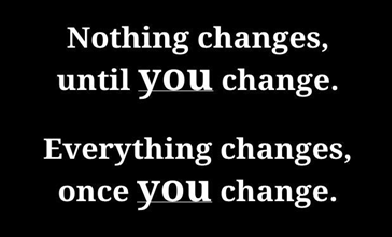
Figure 5
John Lodder M.A., MSc.




